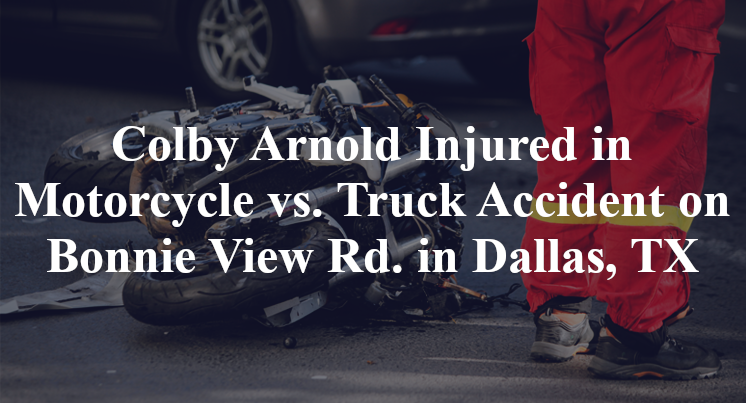Colby Arnold Injured in Motorcycle vs. Truck Accident on Bonnie View Rd. in Dallas, TX
Dallas, TX — July 31, 2024, Colby Arnold was injured due to a motorcycle versus truck accident at approximately 10:00 a.m. along Bonnie View Road.
According to authorities, 21-year-old Colby Arnold was traveling on a westbound Yamaha motorcycle on Lagoon Road behind a Freightliner truck at the Bonnie View Road intersection when the accident took place.

Officials indicate that, for as yet unknown reasons, the truck entered the intersection at an apparently unsafe time, failing to yield the right-of-way at a stop sign. A collision consequently occurred between the front-right of the truck and the front-left of a southbound Subaru Crosstrek. The motorcycle—which had allegedly been following closely behind the truck—crashed into the back of the Freightliner after the initial collision. Arnold reportedly sustained serious injuries due to the wreck. Additional details pertaining to this incident are not available at this point in time.
Commentary by Attorney Michael Grossman
When a motorcyclist is seriously hurt after rear-ending a commercial truck, the first assumption is often that they were simply following too closely. But based on what’s been reported here, that conclusion might miss a larger issue—namely, whether the truck’s driver created a dangerous situation by failing to yield in the first place.
According to the initial account, the Freightliner entered the intersection despite being subject to a stop sign. If that’s accurate, it appears the truck driver failed to yield the right-of-way, causing a collision with an oncoming Subaru. That initial crash likely brought the truck to an abrupt stop—or altered its position in the intersection—which in turn left the motorcyclist behind it with little to no time to react.
So while it’s true that a rider has a duty to maintain safe following distance, what matters most here is whether that duty could realistically be fulfilled given the truck’s actions. If the Freightliner made a sudden, unlawful movement that forced the Subaru to strike it and caused the truck to stop short, that chain of events may explain why the motorcycle impacted the truck’s rear. In that case, responsibility doesn’t fall on the rider alone.
It’s also important to consider visibility and timing. Was the motorcycle operator able to see past the truck and anticipate what was happening in the intersection ahead? Or was the truck blocking the rider’s view of cross traffic? The answers to those questions will shape how investigators evaluate not just the rider’s following distance, but the foreseeability of the truck’s maneuver.
This case illustrates how fault isn’t always about the last link in the chain. If the rider’s crash was set in motion by the truck driver’s failure to yield, that context matters—and so does the evidence that supports it.
Key Takeaways:
- The truck’s alleged failure to yield at a stop sign may have triggered the entire chain of collisions.
- Even though the motorcycle rear-ended the truck, liability depends on whether the truck’s movements created an unavoidable hazard.
- Investigators should assess whether the motorcyclist had a clear view of the intersection or was reacting to a sudden, obstructed stop.
- Dash cam footage, intersection layout, and vehicle spacing will be key to determining who had the opportunity to avoid the crash.
- Rear-end impacts involving motorcycles require careful analysis of timing, sightlines, and triggering events—not just assumptions about fault.

“These are essential reads for anyone dealing with the aftermath of a truck wreck”– Attorney Cory Carlson